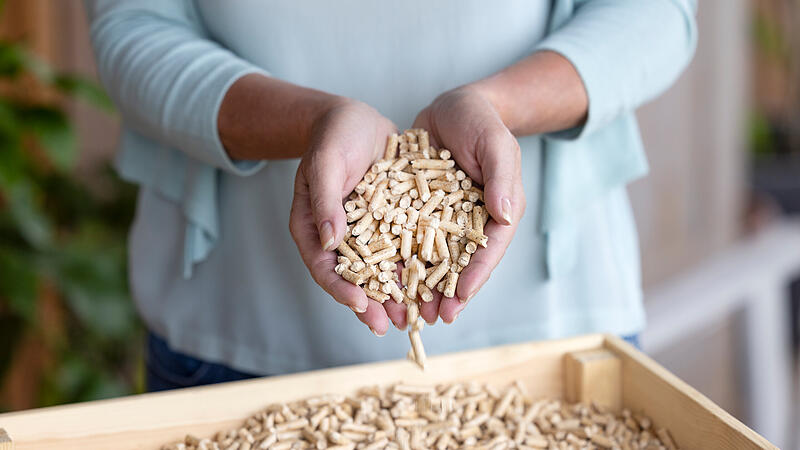Image: Robert Josipovic
However, they are still around 76 percent higher than at the beginning of the 2021 heating season. Now in September, the fuel costs 40.3 cents per kilogram, but 29.1 percent less than a year ago and 1.2 percent less than in September August, according to the industry association proPellets Austria.
In the summer of the previous year, pellet prices shot up by up to 140 percent. Between October 2022 and March 2023, the price of pellets fell by 42 percent and was now only 20 percent higher than the prices before the turmoil on the energy market: this year in March, which is naturally a cheaper time to buy pellets, a kilogram cost 35 cents.
Cheaper than natural gas and heating oil
At the current price of 40.3 cents, pellets are still “far cheaper than natural gas and heating oil,” the industry association emphasized.
In September 2021, at the start of the heating season before Russia’s war of aggression against Ukraine began, the price for pellets was only 22.9 cents per kilogram, as Rakos announced on Wednesday in response to an APA request. This meant it was almost 76 percent below the current value.
“The reasons for the higher price level are primarily due to the price increases for raw materials,” the managing director told the APA. In view of the falling lumber production (decrease in construction activity), chips from which the pellets are made have become significantly more expensive. All other costs such as energy, pressing aids, etc. as well as distribution costs have also increased significantly.
Converted to the kilowatt hour (kWh), wood pellets are generally considered cheaper than oil and gas heating systems. Comparing pellet stoves and heat pumps is more difficult and depends on several factors. Heat pumps can – depending on the efficiency (annual performance factor) and a south-facing photovoltaic system on the roof – be significantly cheaper than pellets during operation.
“Anyone who relies on pellets from Austria is relying on sustainability at an affordable price,” says Rakos. Pellets are made in Austria from sawdust and wood shavings, are a climate-friendly fuel and the supply is secured in the long term through investments in state-of-the-art pelletizing plants.
In recent years, the pellet industry has invested 300 million euros in the energy transition, according to the industry association in a press release on Wednesday. This year alone, five new pelletizing plants have already been put into operation, with two more to follow before winter. In addition, additional plants are planned to open in the next two years. Retailers are also investing in the construction of new pellet storage facilities and in numerous new delivery vehicles.
According to proPellets Austria, 1.69 million tons of pellets were produced in this country in 2022. Around 250,000 households use pellet central heating and pellet fireplaces are used by around 250,000 households. The total consumption of these households was 1.2 million tons of pellets.
According to the industry association, extra-light heating oil is currently 52.6 percent more expensive than pellets, and natural gas is even 132.48 percent more expensive. An average household uses around 5.5 tons of pellets per year. Compared to heating oil, this currently saves you more than 1,160 euros for the heating season. Based on the current average prices for natural gas, the savings for the coming heating season would be as much as 2,935 euros.
more from economics




